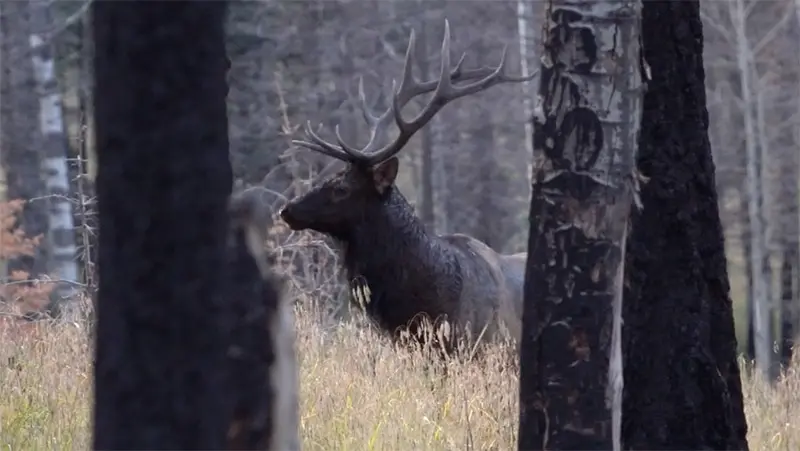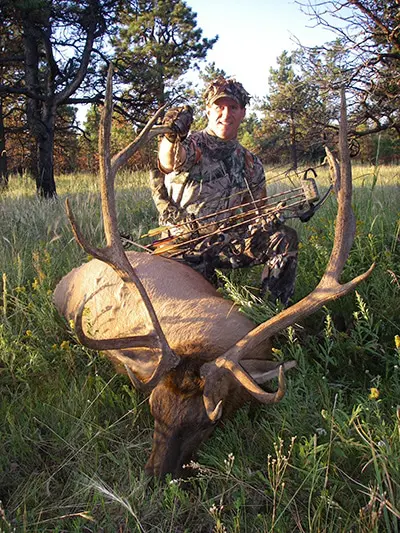
I think it is very helpful for hunters to understand that there is a difference between “THE” Rut and “A” Rut.
Here’s what I mean. When most people think about THE RUT, they think about that general time of year in elk country from early September to early October when bulls are going nuts, screaming their heads off and chasing cows. It is often seen as an overall phenomenon that effects every bull elk in the country. That every bull during September is constantly running around fighting off challengers and breeding cows. That is exactly how I use to see it too. But then, years ago I bumped into an an Old-Timer during a hunt. He proceeded to tell me that he knew of A RUT that was happening in a drainage just south of where I was hunting. I was really confused because in my mind “THE RUT” should of been happening…. EVERYWHERE!
Let me tell you, what came out of our discussion became one of those “Ah-Ha” moments that changed the whole way I saw and understood elk behavior. It altered my journey as an elk hunter and helped me to develop hunting and calling strategies that have been paramount to my success over the years.

So let me put it to you as simple as I can;
“THE RUT” is that general breeding season, around the Fall Equinox, when bulls want to breed with a cow coming into estrus. Herd bulls will gather cows into what is known as a harem and tend them for days or weeks. If he doesn’t lose them to challengers, he will maintain his herd until each of them at some point comes into estrus.
“A RUT” occurs when a cow comes into estrus and the herd bull and other bulls known as “Satellites” begin vocally and physically challenging each other to be able to breed the “hot” cow. Bulls lose their mind at this point and the fights for dominance can become incredibly intense. Even to the point of injury or even death. Any bull within ear shot of multiple bulls screaming in the same area will know immediately that there is a hot cow and will want to join in. Hopefully stealing away a cow or two during all of the commotion. A cow will be in estrus for less than 24 hours and will be bred, depending on the amount of mature bulls in the area, by four to six bulls. At this time, the bulls are Rutting.
THE RUT is a general season when breeding can occur.
A RUT is when breeding is happening.
So how did this change my calling strategies and help me to be more successful?
Because now I had the secret to getting bulls worked up and coming in even though they were not themselves rutting or defending a hot cow. It changed what calls I was using and why.

Prior to this, my main calling strategy, like every other hunter in the woods, involved finding a bull that was worked up enough to want to fight another bull. Either a satellite that was frustrated after harassing a herd bull or a herd bull himself that wanted to fight a newcomer. Find that bull, hit him with aggressive challenging bugles and it’s on. The problem with this strategy is that it required me to be lucky enough to be in the area where a cow was in estrus so that the bulls were firing off. If there wasn’t A RUT happening, I was out of luck.
I now understood that the lack of bugling had nothing to do with the rut being late, or early, or that it was a constant that I should hear occuring everywhere. A RUT simply occurred when a cow came in estrus. Or, at least when other bulls either actually smelled the pheromones from a cow in heat. Or, and this is the secret…also if they heard the sounds of another bull with a hot cow. Listen y’all, every bull in the woods has the same goal. Wanting and searching to breed a cow. So if I created a false scenario, or used multiple calls and sounds that painted the picture of A RUT occurring myself, I could play on a bull’s drive to breed and have bulls come to me. Who needed to wait on A RUT!

Understand, I still like to locate a bull using non-aggressive location bugles or cow calls to be able to work one. But after locating a bull, I no longer have to have A RUT to be happening in order to bring that bull in. I don’t have to depend on that bull being hot, frustrated or aggressive in order to pull him into my setup. Instead, I act like he doesn’t exist. I now paint the picture of being a bull with my own hot cow. Now I have reversed the tables with a strategy that bulls seldom experience from public land hunters and it is incredibly effective.
If you would like to hear more on the type of scenarios or calls I use to do this, check out our Blue Collar Elk Hunting Podcast and look for our Episodes on Elk Calling Strategies for the Solo Archery Hunter.
Keep your broadheads sharp and your powder dry!


